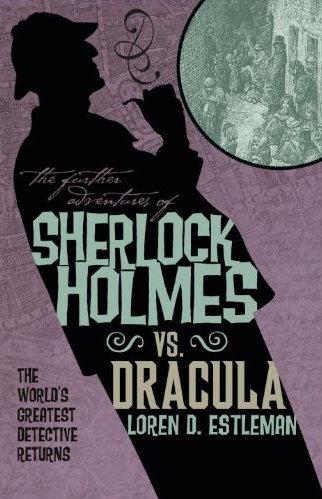“But I don’t have the Spark. I seem to have the opposite. Nothing I build even works.”
Krosp sighed in exasperation. “What do you think you DO at night?”
Agatha looked wary. “I don’t know. I’m asleep. What do I do at night?”
‘You build things.”
“But there’s never anything there when I wake up.”
Krosp folded his arms. “”They always run away.”
Agatha Clay (or is it “H”?) is a frustrated teenager. Essentially an orphan, she lives in the care of Adam and Lilith, friends of the family who promised her uncle years before that they would care for her while he was away. It’s been eleven years and counting. They’re also “constructs”, the result of some mad scientist (and there are many in Europa) finding a needle and thread and some body parts to stitch together. A student at the Transylvania Polygnostic University, Agatha works as a lab assistant to the Tyrant of Beetleburg, the aptly named Dr. Beetle. Yet try as she might, none of her experiments ever work out. Create a clank (mechanical construct) and it falls to pieces within a few steps. Try to apply her mind to a problem; the result is splitting headaches. In a world lit by Sparks–I’ll get to that in a minute–Agatha’s light is much diminished.
It’s especially hard to shine in a time when those that have an almost magical ability to wield science–the aforementioned “Sparks,” create a multitude of wonderful, and sometimes dangerous, constructs. When the construct is flesh and blood, you end up with her ersatz parents, or the monster soldiers (Jagermonsters) that patrol the streets of Europa. When it’s mechanical, you end up with Mr. Tock, the giant clank that guards the front gate of the University. Agatha yearns to fulfill her potential, but fails miserably every time.
A brief word about Sparks: generally, their talent for all things scientific manifests itself at puberty and can be quite disconcerting. Some go crazy. Others are just a bit odd, hence the moniker “Madboys” that gets tossed around in any discussion of a Spark. Being a Spark is a dual edged sword. They are generally capable of great accomplishments; however, those accomplishments more often than not wind up killing them.
On her way to school one morning, Agatha is waylaid by a couple of destitute soldiers, one of which steals her necklace. The locket attached is irreplaceable, containing the only picture of her parents she has. Late to the lab and rightly upset, she discovers that the Tyrant’s Tyrant, Baron Klaus Wulfenbach, has made a surprise visit to the university, bringing with him a cadre of soldiers and a righteous anger. Years before, a villain known as “The Other” terrorized Europa, wiping out various members of the Spark gentry and enslaving their subjects before disappearing around the same time as the legendary Heterodyne Brothers, two Sparks famed for their ability to take care of just that sort of problem. The means by which the Other subjugated the people were known as Slaver Wasps, mechanical insects that sprang from Hive Engines to either kill or enslave the populace. Dr. Beetle has managed to find a dormant hive and in a moment of incredibly bad judgment, tried to keep knowledge of it from Wulfenbach. Next you know, Dr. Beetle is dead, the town is occupied by the Baron’s troops, and Agatha has been dismissed from the university.
Distraught after this series of unfortunate events, Agatha retreats back to her foster parents and retires for the night. She’s always been a restless sleeper, dreaming of all the things she wants to build. The next morning Agatha wakes to find that a clank the size of a steam tractor—perhaps formerly the steam tractor Adam was overhauling–has rampaged through town and brought both the Baron and his son Gil–accompanied by a mob of Jagermonsters–to her doorstep. Even worse, one of the thieving soldiers has dropped by, wanting to know why his brother died after handling her locket for less than a day. As for the Baron, he’s excited at the prospect of harnessing the power of a new Spark, and before anything can be sorted out, both Agatha and the soldier have been gassed and whisked away to the Baron’s stronghold.
When Agatha awakes, she’s informed by Moloch (the soldier) that they’re hostages on the Baron’s Airship City, and that Wulfenbach has mistaken Moloch for a nascent Spark. Moloch knows the truth of Agatha’s abilities and needs her to play the role of his assistant while they find a way to escape. As for Agatha, she’s beginning to realize she can create things that actually work, that the headaches accompanying her attempts at concentration have disappeared, and that she’s in a lot of trouble.
Gilgamesh Wulfenbach, heir apparent to his father’s tyranny, has taken notice of her.
From there it’s one adventure after another as Agatha explores the floating city, meeting its many denizens, malevolent and benevolent alike, trying to keep her secret from the Baron while looking for a way to escape his clutches. Luckily, Gil seems a bit smitten with her and wants to encourage her development, even if it’s just to spite his father.
***
I’ll grant this description doesn’t live up to the contents of Girl Genius: Agatha H and the Airship City, but it’s a daunting book to describe. I’ve omitted a lot in my brief synopsis because there’s simply so much going on that it’s impossible to encapsulate everything in a few paragraphs. Luckily, there’s a Girl Genius Wiki online to keep everything straight.
Clearly a Steampunk novel with great aspirations, Girl Genius is based on the Web comic of the same name by Phil and Kaja Foglio. When first sitting down to read it, I worried that Girl Genius was going to be a Harry Potter knock off, what with the main character being a student at a school for gifted children in a land divided into those who are normal and those who possess a special talent, this time an innate talent for science rather than magic. However, aside from the fact that she’s a university student and that magic has been replaced by science, there are very few similarities between the two novels.
Actually, that’s both true and untrue. The more I think of the Other who disappeared years ago after wreaking havoc on the realm, the more I see the comparison to Voldemort of the Potter series. However, the story of a girl taken from her home and plunged into a strange and wondrous world begs comparison to Baum’s Dorothy and the Wizard of Oz, although in this case, the world seems filled with tin men. Once I got beyond the inevitable comparisons, I was able to sit back and enjoy a thoroughly entertaining tale. The Foglio’s have done a bang up job of creating their own Steampunk universe and inhabiting it with various interesting and unique characters. My personal favourites were the Jagermonsters, an army of Hydes (of the Dr. Jekyll variety). Ferocious and intimidating, they are also endowed with a certain childlike charm. They also add a nice bit of comic relief, even in situations that wouldn’t normally seem to warrant humour.
Is this a young adult novel? That’s a hard question to answer, as some of the scenes are (from the perspective of this forty year old) somewhat racy, although there’s really no more hanky-panky than a stolen kiss. It’s definitely not limited to teens, being a fun filled romp for anyone with a predilection towards the Steampunk genre.
Fair warning: Agatha H and the Airship City is certainly not meant to be a self-contained novel. Rather, it’s more of a prologue to a larger story, introducing the main characters and the world they inhabit without resolving the greater issues introduced. Where are Agatha’s parents? What of the legendary Heterodyne brothers and the mysterious Other that once terrorized the realm? Why are the Jagermonsters so obviously smitten with Agatha? Why does Agatha seem to be so important to everyone around her? These are a few of the questions that will hopefully be addressed in the sequel: Agatha H and the Clockwork Princess. This teaser novel has definitely got me hooked.
B+






